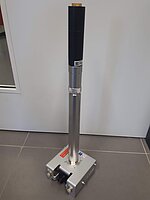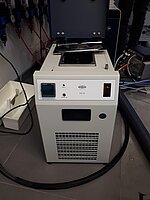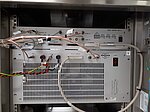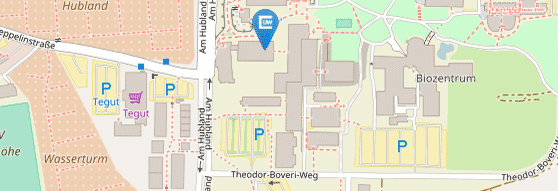DOSY measurements
Diffusion NMR measurements provide the remarkable opportunity to detect the motion of molecules in solution. Random translational motion, known as Brownian molecular motion, of dissolved molecules arises even in the absence of external forces and is characterized by an intrinsic self-diffusion coefficient. This diffusion coefficient is influenced by the size and shape of the dissolved molecule and enables to draw conclusions on aggregation, encapsulation, or complexation phenomena dependent on the temperature and viscosity of the solvent. Furthermore, diffusion ordered spectroscopy, DOSY, enables separation of signals in molecular mixtures by their respective diffusion coefficient and can be presented in a pseudo 2D plot.[1-2]
A pulsed field gradient is essential to perform such measurements, as it spatially encodes the position of molecules by inducing a position dependent phase angle of the nuclear spins. Commonly, z-gradients are applied, which can determine the altered position of the molecules in z-direction only.
Standard probes used in NMR spectroscopy can usually apply a maximum field gradient strength of ~50 G/cm, enabling to measure diffusive behaviour for small molecules and aggregates up to a diffusion coefficient of 10-11 m/s2. Macromolecules such as polymers or proteins pose a particular challenge as they change their position rather slowly due to their large size and therefore exhibit even smaller diffusion coefficients.[1-3] To be able to measure their diffusion coefficients, very high gradient strengths are indispensable. Therefore, a special Diff30L diffusion probe with a GREAT 60 A gradient amplifier is used here, which employs gradient strengths up to 1800 G/cm and enables measurement of diffusion coefficients down to 10‑15 m/s2.[4] These gradient strengths generate considerable heat, which must be dissipated by an additional water-cooling unit to ensure that the measurement is not distorted by convection.[4] Additionally, further gradient transient effects require special care when handling such high gradient strengths to obtain spectra of a desired quality.[5]
[1] C. S. Johnson Jr, Prog. Nucl. Magn. Reson. Spectrosc. 1999, 34, 203-256.
[2] Y. Cohen, L. Avram, L. Frish, Angew. Chem., Int. Ed. 2005, 44, 520-554.
[3] E. O. Stejskal, J. E. Tanner, J. Chem. Phys 1965, 42, 288-292.
[4] K. Zick, Diffusion NMR user manual (version 004), Bruker Biospin GmbH, Rheinstetten, Germany, 2016.
[5] J. Hou, L. A. Madsen, J. Chem. Phys 2013, 138, 054201.





